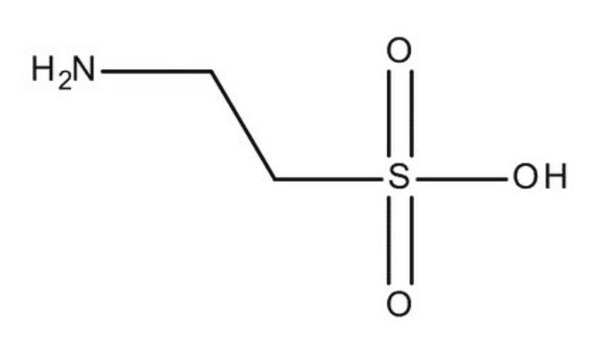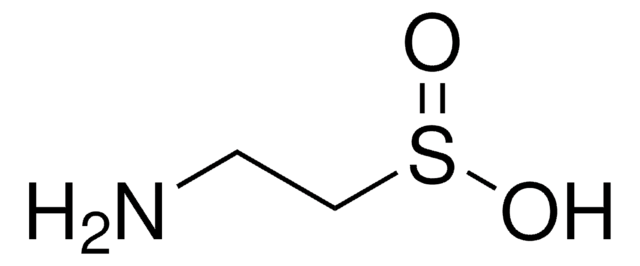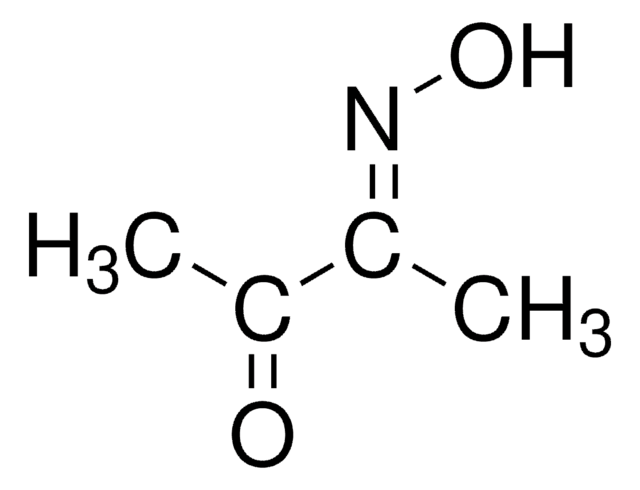W381306
Taurine
≥98%, FG
Synonim(y):
2-Aminoethanesulfonic acid
About This Item
Polecane produkty
pochodzenie biologiczne
synthetic
Poziom jakości
klasa czystości
FG
Halal
Kosher
agency
meets purity specifications of JECFA
zgodność regionalna
EU Regulation 1334/2008 & 178/2002
FDA 21 CFR 117
Próba
≥98%
mp
>300 °C (lit.)
Zastosowanie
flavors and fragrances
Dokumentacja
see Safety & Documentation for available documents
alergen pokarmowy
no known allergens
Organoleptyczne
odorless
ciąg SMILES
NCCS(O)(=O)=O
InChI
1S/C2H7NO3S/c3-1-2-7(4,5)6/h1-3H2,(H,4,5,6)
Klucz InChI
XOAAWQZATWQOTB-UHFFFAOYSA-N
Szukasz podobnych produktów? Odwiedź Przewodnik dotyczący porównywania produktów
Opis ogólny
Zastosowanie
- Efficacy of taurine-enhanced enteral nutrition in improving the outcomes of critically ill patients: A systematic review and meta-analysis.: This meta-analysis evaluates the effectiveness of taurine-enhanced enteral nutrition in critically ill patients. The results indicate that taurine supplementation significantly improves patient outcomes, including reduced inflammation and enhanced recovery rates (Zhang et al., 2024).
- Taurine reduces the risk for metabolic syndrome: a systematic review and meta-analysis of randomized controlled trials.: This systematic review and meta-analysis demonstrate that taurine supplementation can significantly reduce the risk of metabolic syndrome. The findings support taurine′s potential as a therapeutic agent in managing metabolic health and preventing related diseases (Tzang et al., 2024).
Działania biochem./fizjol.
Kod klasy składowania
11 - Combustible Solids
Klasa zagrożenia wodnego (WGK)
WGK 2
Temperatura zapłonu (°F)
Not applicable
Temperatura zapłonu (°C)
Not applicable
Środki ochrony indywidualnej
dust mask type N95 (US), Eyeshields, Gloves
Certyfikaty analizy (CoA)
Poszukaj Certyfikaty analizy (CoA), wpisując numer partii/serii produktów. Numery serii i partii można znaleźć na etykiecie produktu po słowach „seria” lub „partia”.
Masz już ten produkt?
Dokumenty związane z niedawno zakupionymi produktami zostały zamieszczone w Bibliotece dokumentów.
Klienci oglądali również te produkty
Nasz zespół naukowców ma doświadczenie we wszystkich obszarach badań, w tym w naukach przyrodniczych, materiałoznawstwie, syntezie chemicznej, chromatografii, analityce i wielu innych dziedzinach.
Skontaktuj się z zespołem ds. pomocy technicznej







